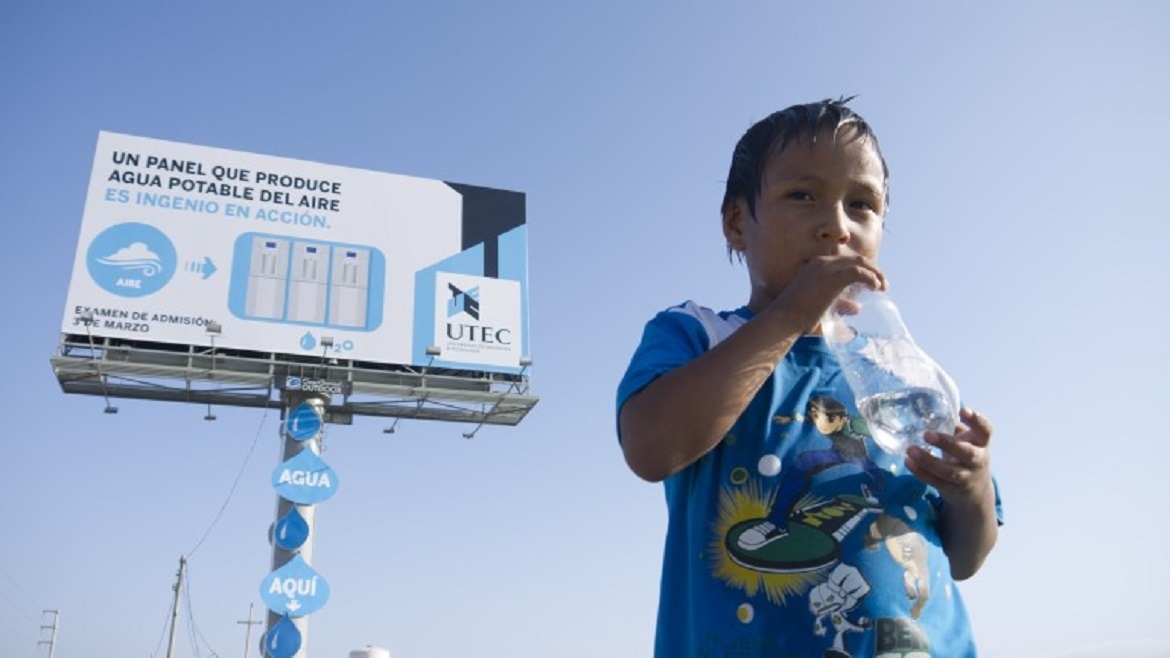Rain in Glasgow is not of the refreshing, life-affirming kind. It's cold, oppressive, omnipresent - it's precipitation, North Korea-style.
But last month I attended a World Water Day meeting in Geneva which taught me some uncomfortable truths. Among other things:
- 783 million people still have no access to decent drinking water.
- 60% of a Yemeni family's income goes on water. Everywhere, it's the poorest who pay the highest water prices.
- 1,300,000 children die from diarrhoea (caused by poor sanitation) each year.
- It takes 140 litres of water to produce one cup of coffee.
- It takes 15,000 litres of water to produce one kilo of beef.
Back in the office, guiltily supping my coffee, my eye caught a story on the BBC website – Advert turns air into drinking water. I read it, thought "What the…?", and read it again. Three weeks on, I'm still thinking "What the…?"
An hour south of Lima, Peru, in a region which receives practically zero rainfall (less than 1cm a year) there's a billboard by the side of the road. It's an advert for UTEC, the local University of Engineering and Technology and it reads "A panel that produces drinking water from air is ingenuity in action". There are neon water drops, and beneath the drops there's a tap. In a town where many residents have no access to clean water, anyone can show up, turn on the tap, fill up their bottle and take it away.
It works because air humidity is high in these parts, often reaching 98 percent, and because it's pretty straightforward to extract water vapour from air using a condenser. Inside the billboard there are five condensers to capture the water, a tank to store it, and filters which channel it down to the tap. In the words of UTEC's spokesperson, Jessica Ruiz, "the panel traps humidity in the air and transforms it into water - it's that simple."
This billboard produces 100 litres of drinking water a day and cost US$1,200 to set up. UTEC say the idea was to show people that it's possible to solve problems with engineering. I think they've succeeded beautifully.
Further south, in the Atacama desert of Chile where they get a miserly 1 mm of rain a year, a physicist called Carlos Espinosa is doing something similar. As he puts it, "I harvest water from the clouds". There's a delightful, short video on Youtube here showing Carlos in action. You'll see a simple structure covered in nylon mesh that captures fog vapour and converts it to water, without consuming any energy.
Carlos' technology has been rolled out successfully in Lima. This article in the Guardian reveals that USAID provided a $20,000 grant to the Peruvians Without Water movement to build 22 fog nets which supply around 75 families with water. Each net, complete with a tank, costs less than $800 to construct and produces a daily supply of 50-150 litres of water.
Now consider this. Carlos says in his video that he hopes cloud harvesting will become a profitable technology "in 10 or 50 years". I'm no water expert, but I'd have thought that a process which involves cheap and basic kit, which requires little maintenance and zero energy inputs, might represent a more cost-effective option to water sourcing than, say, desalination.
As we wrote in a recent Economist piece about China, turning sea water into fresh water costs a fortune and uses enormous amounts of energy. In California, they're currently building a vast desalination plant at Carlsbad (there's a good New York Times article here), and the cost-benefit analysis looks decidely shaky. Fitch Ratings have given the project’s $734 million bond issue a BBB- rating, the lowest for investment grade debt, and the plant's huge energy footprint (it will consume 5,000 kilowatt-hours of electricity to produce an acre-foot of water) has environmentalists up in arms.
So I'm wondering, don't Carlos' and UTEC's low-tech, eco-friendly approaches to water sourcing point towards better alternatives? Would cloud harvesting work on an industrial scale? Or should we pour resources into desalination to help that technology become cost-competitive? Are there other, smarter options out there? I'd welcome your views and opinions via the comments box below.
Similarly, The Economist are planning to organise a Water Summit in 2014 that gets to grips with the big issues around sustainable water management, and I'll be happy to hear anyone's thoughts on the topics that we should be considering.
And for those of you wishing more reading material on water, I recommend the UN's World Water Day site, Peter Brabeck's Water Challenge blog, this neat water infographic and National Geographic 's water footprint calculator.
Cheers,
Dougal




